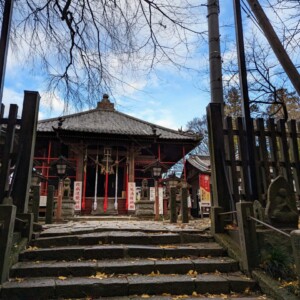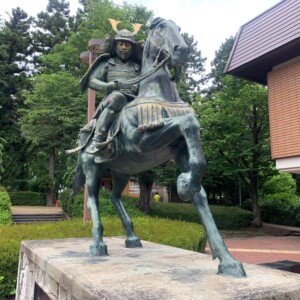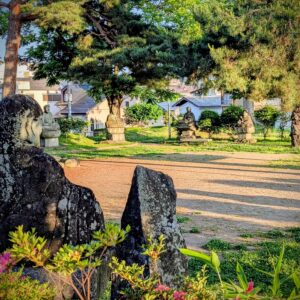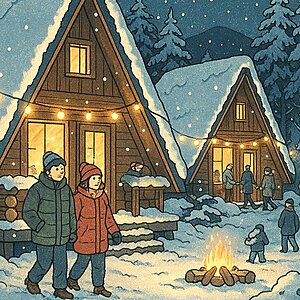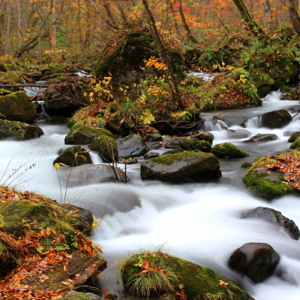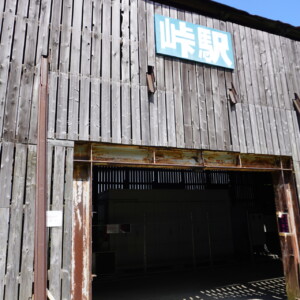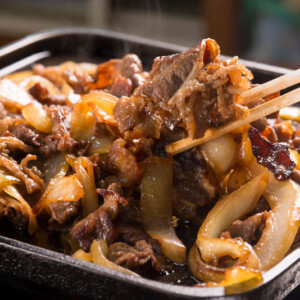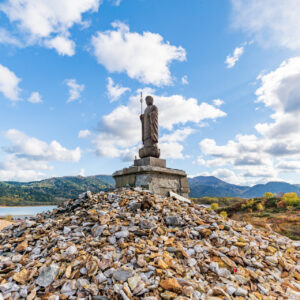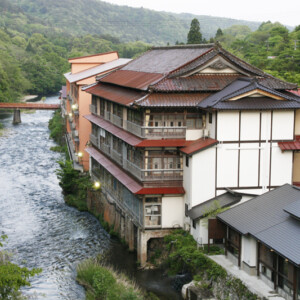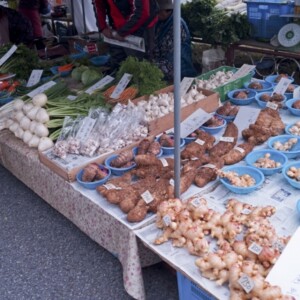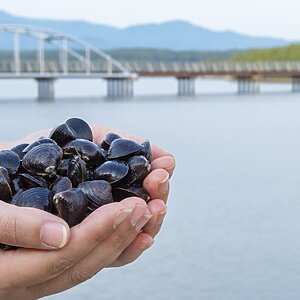
I actually visited the Aomori Winter Three Festivals "Hachinohe no Enburi" local report [Hachinohe city, Aomori prefecture]
table of contents
There are various "festivals" in Tohoku, and in the summer there are a wide variety of "festivals" in various places, including the Akita Kanotai Festival, the Hanagasa in Yamagata, the Nebuta and Morioka Sansa dances in Aomori, and the Sendai Tanabata.
In Tohoku, where winters continue to be severe, you will only notice "summer festivals," but in Hachinohe City, Aomori Prefecture, Hachinohe Enburi , which is designated as a nationally important intangible folk cultural property, and is a local festival that wishes for a good harvest, passed down in the region.
This time I went to Hachinohe City, Aomori Prefecture to see the Hachinohe Enburi, so I would like to introduce you to the charms of Hachinohe Enburi.
Hachinohe Enburi? Aomori winter festival?
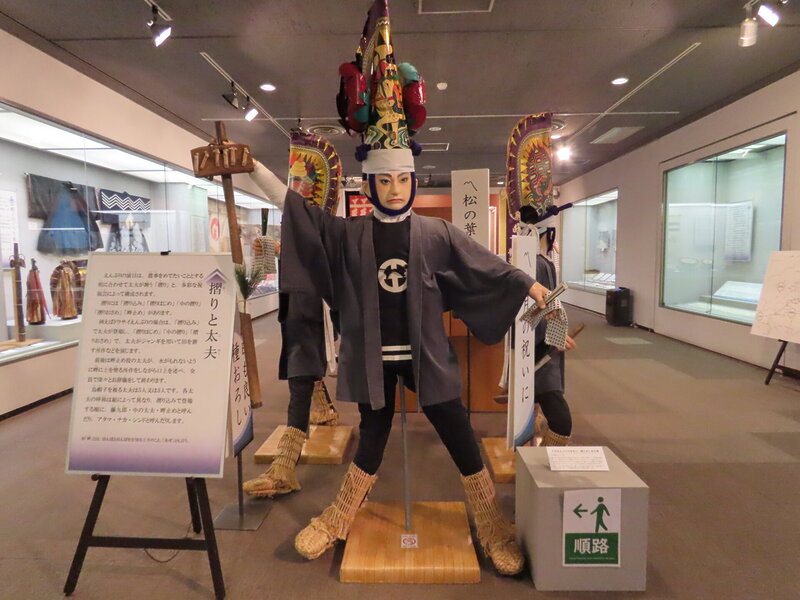
Local report! Before we go, we will explain about Hachinohe Enburi. First of all, the name " enburi eburi, a T-shaped farming tool used to flatten the soil in the rice fields , and as the name suggests, it refers to a ritual ceremony in which "a" is used to pray for a good harvest of rice.
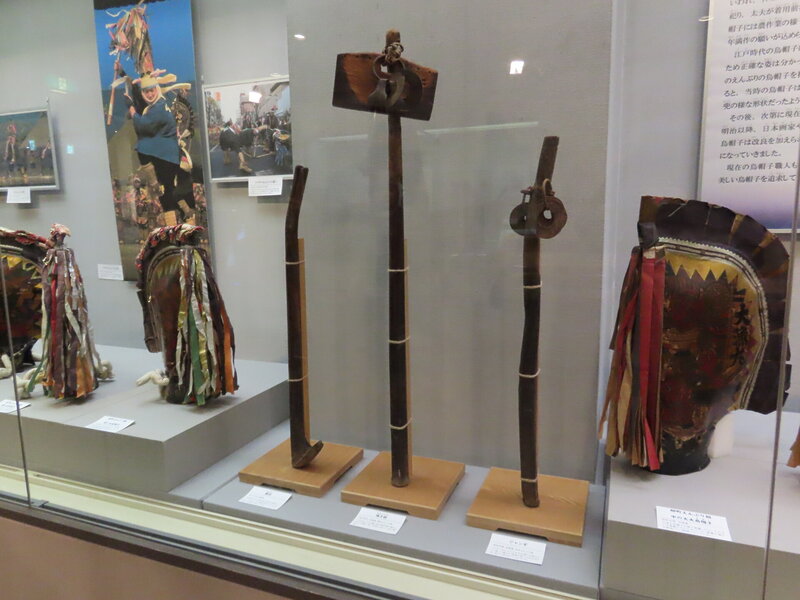
"Enburi" is a pre-celebration performance that wishes a good harvest before rice planting.
Also, "Enburi" is a pre-celebration entertainment (an entertainment/faith that prays for the realization of this by celebrating it in advance) , and is held every four days from February 17th to 20th before rice planting, and is also known as Winter Festival
The "Enburi" performance depicts rice cultivation, which begins with sowing seeds, as a single story, and although there are slight differences between groups, the basic structure consists of four parts:
1. Sliding
The introductory department enters the hall, with Tayu's leader Fujikuro saying the words to begin his throbbing.
2 Start of printing
The song begins with a celebration song at the beginning of the year, and then depicts preparations for planting rice, where seeds are sown at the seedlings and horses are allowed to plow the rice fields.
3. Inside printing
A printing method that represents planting grown seedlings in a rice field.
4.
A printing method that shows the end of harvesting rice and the bales are loaded into the storehouse. They obtain treasures and sing, "We have created treasures from various countries," and celebrate the harvest and pray for a good harvest.
5. Floor fastening (black dot)
The thrust ends with a "ridge," in which you chant the words of a spell to prevent water from leaking from the important fields.
*The enburn is performed in groups andmaster」「TaoIt consists of a total of 20 to 30 people, including "Maiko" and "Ohayashi".
*The above "Fujikuro" refers to "Tayu."
Furthermore, this time I will be introducing it as "Hachinohe Enburi," but "Enburi" is a type of pre-celebration entertainment that is widely held in various parts of the southern Aomori prefecture, mainly in Hachinohe City, Aomori Prefecture, and I will not forget that this time I visited was the "Enburi" in Hachinohe City.
Local report! Hachinohe Enburi!
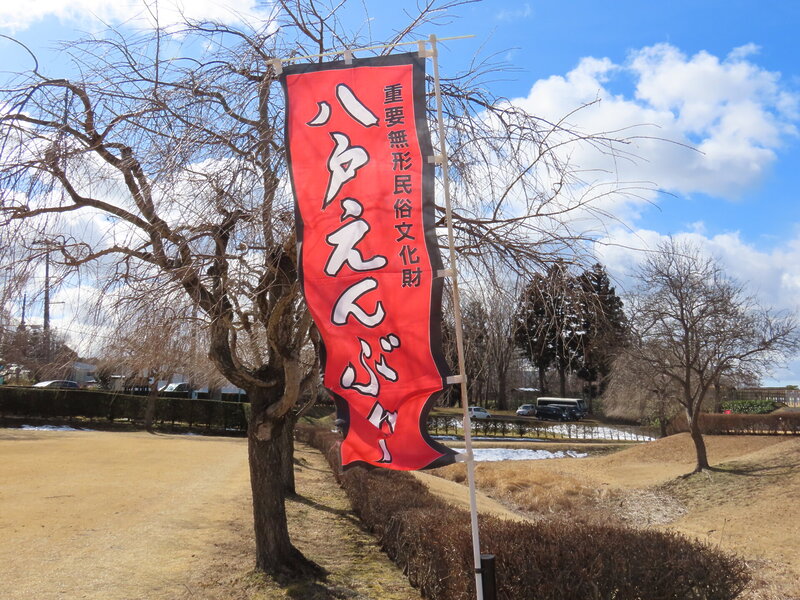
Hachinohe Enburi is held for four days from February 17th to 20th every year , but I visited on the third day, February 19th, and I wanted to see the " Enburi procession " parading around the city centre of Hachinohe city, as shown in the photo below, on the first day, February 17th, but it didn't match my schedule, so I decided to watch it on the third day.
It's frustrating to see the excitement on the first day, but you can still see Hachinohe Enburi, so let's have fun with Hachinohe, which is your first time in your life! I changed my mind and headed down to Hachinohe.
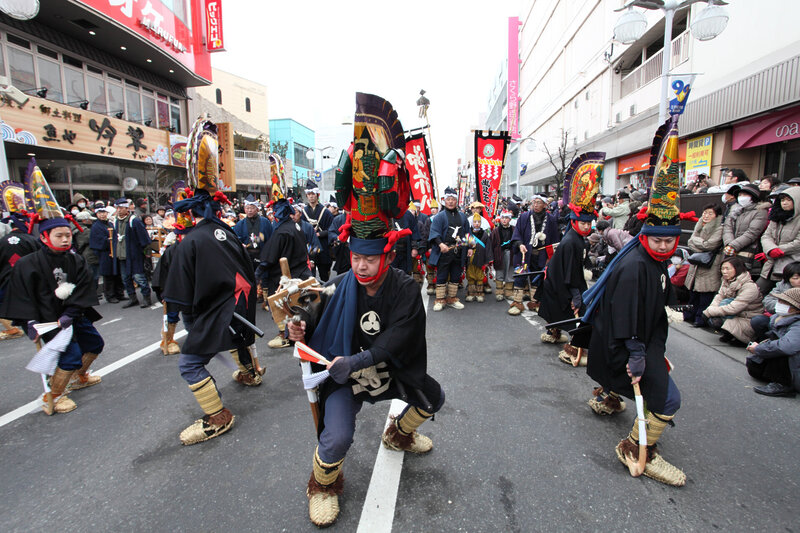
The Hachinohe Enburi viewing schedule has already been decided before the arrival of this date. First, we will be the " Historical Site Nejo Enburi " held at the " Historical Site Nejo Enburi " and the " Oniwa Enburi " held in the evening at the " Sarajokaku " event, which is reserved.
Experience at a historical site! Hachinohe Enburi!

went to see Historical Site Nejo Enburi at the planned Historic Site Nejo Square The show started at 11:00, and customers have already been gathering one after another for about 30 minutes.
Incidentally, during the event, the "Historical Site Nejo Enburi" will be performing on the 18th and 19th of Chunichi, but it will only be held from 11:00 to 12:00 in the morning.
Although the admission fee is free, please note that admission to Historic Site Nejo
I was also accustomed to the audience and was waiting for my first Hachinohe Enburi in my life, either now or in the present...

It's here! It's the Enburi group!
I haven't done much research in my hands, so I was surprised by the line that continues after this, and when I looked into it later, the "Enburi" varies from group to group, but each has a role to play, with an average of about 20 to 30 people performing.
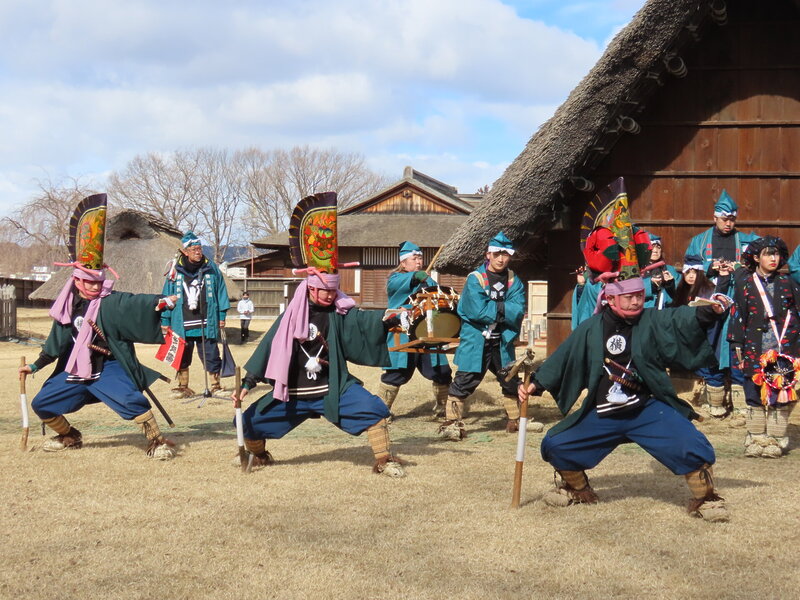
The four-piece "Enburi" takes about 30 minutes to complete? Is that so? I was so moved and even excited by the sound of drums echoing through the town after a long time after a tough winter, and I was so glad to see it. I was convinced. If that were the case, I'd be looking forward to the "Enburi" that will be given a lecture at the Cabinet Secretariat in the evening.
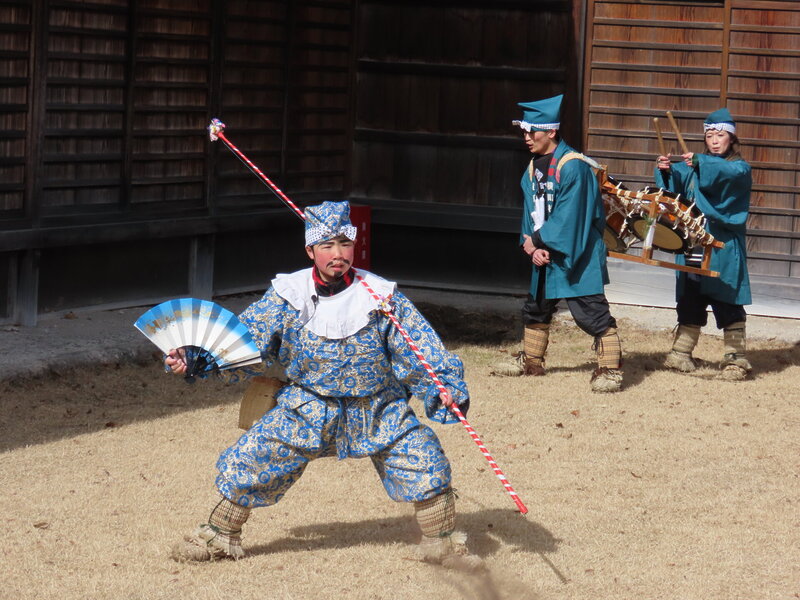
Ebisu Mai is performed around the middle of the event, and perhaps because it is a coastal area, the dance also incorporates expressions of single fishing, not just agriculture.
By the way, when you say "enburi", you can say that the most prominent thing is the eboshi stick on the head. Below the photo, there is a flower decoration on the side of the eboshi, which is considered to be a sign of Tayu (Fujikuro) He's probably the leader of a dance performance.
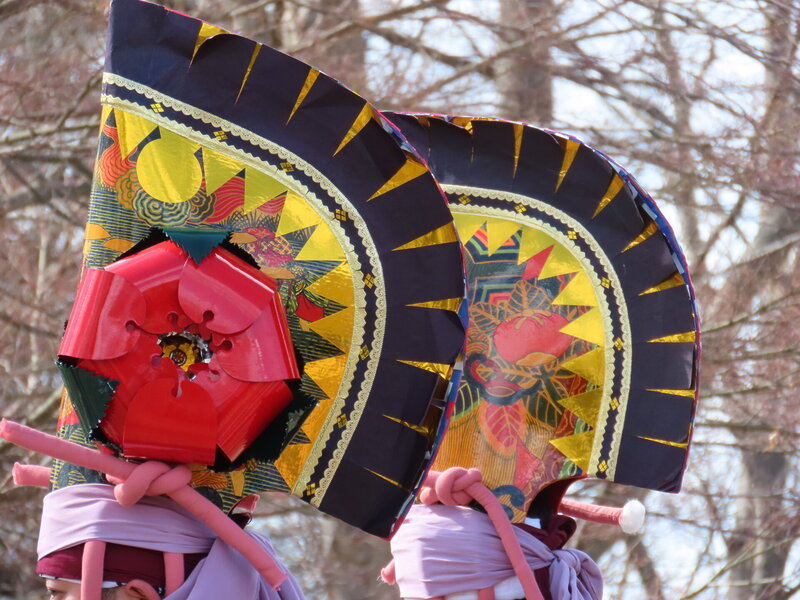
From the evening, a little luxurious "Garden Enburi"
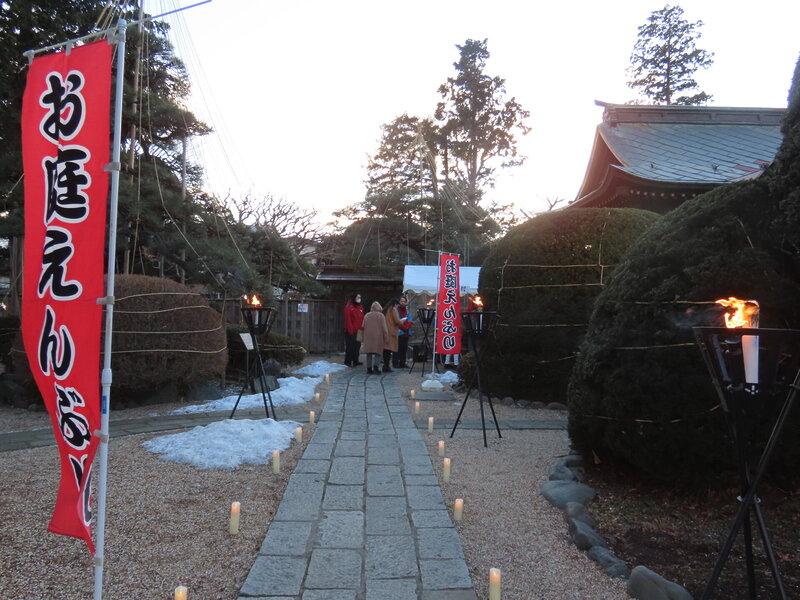
I saw the "Historical Site Nejo Enburi" in the morning, and since I had free time until Oniwa Enburi However, if you talk about it here, it will be a long time, so I'll talk about exploring the city on another occasion.
At the beginning, we explained the schedule for this "Enburi," but from the evening we head Oniwa Enburi to be held at the " ", which is also registered as a national tangible cultural property.
The "Oniwa Enburi" will be held on all days during the event, with performances twice a day in the evening from 5:00pm to 6:10pm and 7:15pm to 8:20pm. There is no free viewing of the "Oniwa Enburi" and is completely advance-ordered and will be viewed by ticket purchases (3,000-3,500 yen).

The most distinctive feature of the "Oniwa Enburi" is that you can enjoy watching it in the "lord's mood," and it also comes with a bonus. Alcohol is also on sale at the venue, so you can enjoy drinking alcohol in a fantastic venue at dusk, unlike in the daytime. I'm so happy about this luxurious thing.
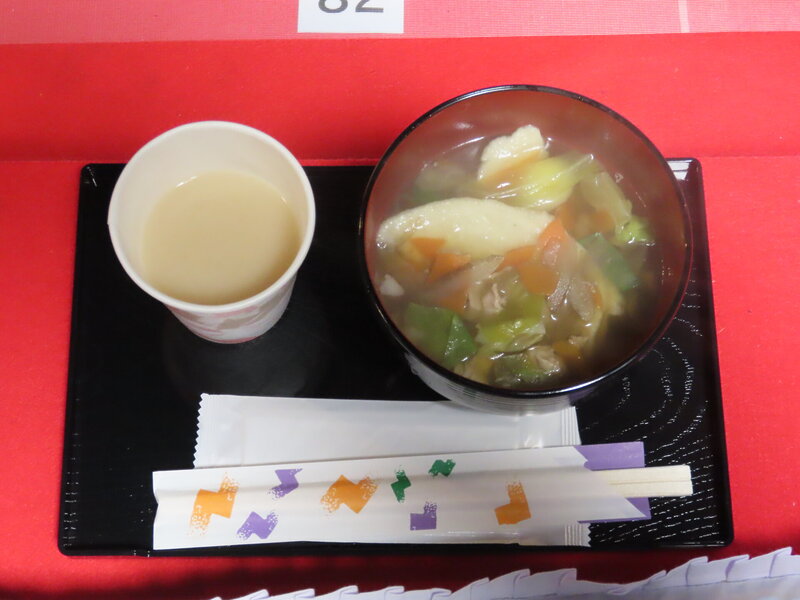
As I warmed my body, which had been cold with the bonus amazake and rice crackers, the host appeared and finally began the performance.
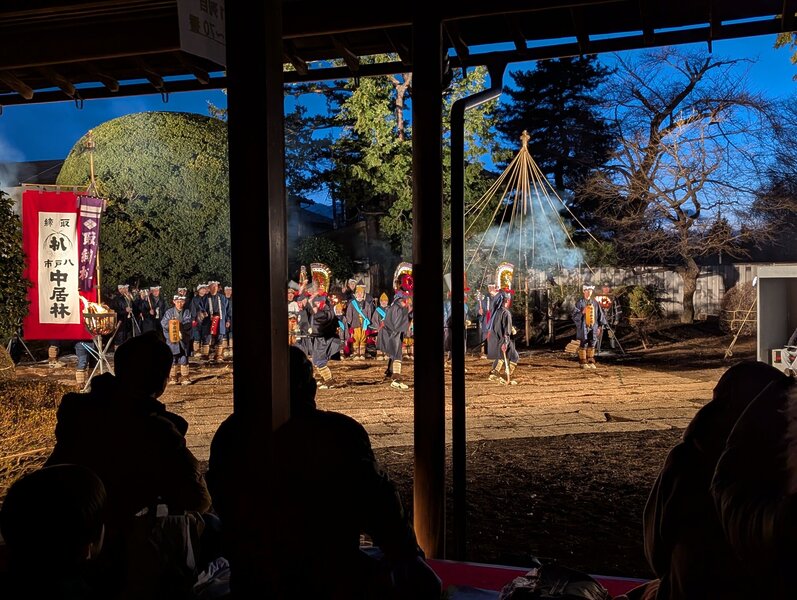
Unlike the "Enburi" seen at Nejo during the day, the "Yokomachi Enburi Group" consisted of five people, and the "Yokomamachi Enburi Group" consisted of three people during the day, and each person was able to enjoy a leisurely viewing viewing, but the lectures of the "Lotusuka Group and Nakaibayashi Enburi Group" that will be performing this time were also bonfire, making it a fantastic and yet different kind of impact.
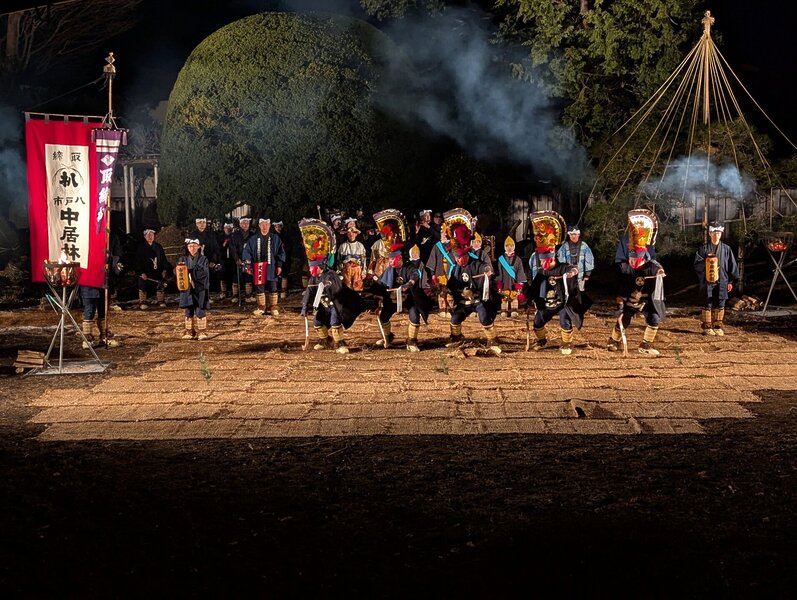
The "Oniwa Enburi" performance ended after 6pm. After this, I disappeared on my first night in Hachinohe.
This trip started with "What is Hachinohe Enburi, the Three Great Festivals in Aomori?", and in addition, it has been awaiting, wishing, and inheriting the "entertainment" that has been passed down for spring in the first Hachinohe city, a harsh winter town. It is recommended that you visit Hachinohe Enburi, a fantastic winter festival that is not just about the bustling summer.
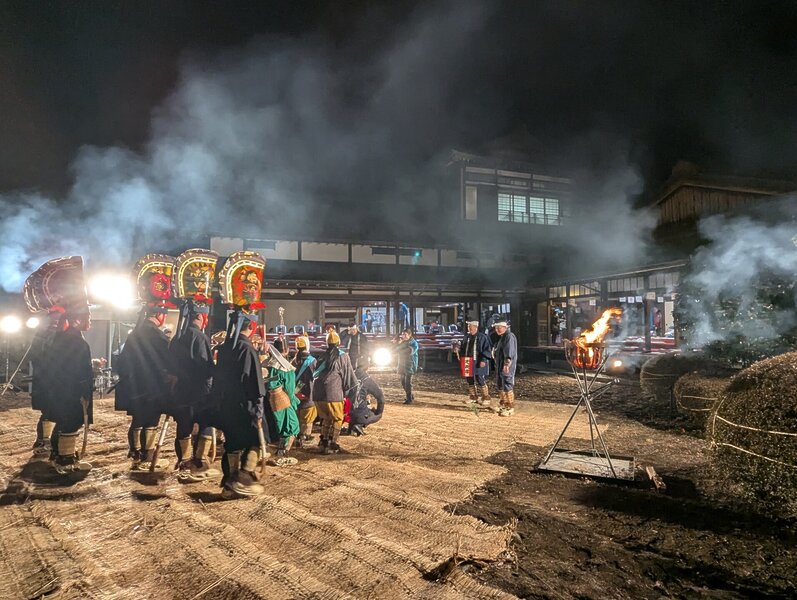



!["Yonegawa Water Cows" is a visit event that is passed down on the Miyagi-Iwate Prefecture border | Local report [Tome City, Miyagi Prefecture] IMG_1099-EDIT (1)](https://jp.neft.asia/wp-content/uploads/2025/02/IMG_1099-EDIT-1-150x150.jpg)
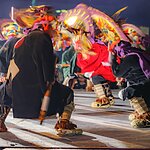
![A report on the local strolling of the temple at Zuiganji Temple in Matsushima! [Miyagi Prefecture] Lanterns at the main gate of Zuiganji Temple](https://jp.neft.asia/wp-content/uploads/2023/11/PXL_20231110_094844387-150x150.jpg)
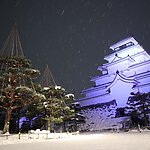
![Sanriku International Art Festival 2024 | An event will be held again this year where local performing arts from the Sanriku region will be gathered together [Aomori/Iwate] Sanriku International Art Festival 2024](https://jp.neft.asia/wp-content/uploads/2024/08/main-150x150.png)
![Sanriku performing arts come together! Photo report from the Sanriku International Arts Festival 2025 "Kamasu" [Kamaishi City, Iwate Prefecture] Nishikimachi Toramai (Kamaishi City)](https://jp.neft.asia/wp-content/uploads/2025/10/DSC_01162-150x150.jpg)
![[Hachinohe City, Aomori Prefecture] “Hachinohe Park” is a cheap place to spend the day! Amusement parks, zoos, botanical gardens, and even campgrounds! Children's Country Ferris Wheel](https://jp.neft.asia/wp-content/uploads/2018/09/3d9993eec77fe4547227b1e23449ac06_s-150x150.jpg)
![[Hachinohe City, Aomori Prefecture] If you want to enjoy Hachinohe seafood, go to Hasshoku Center! It is an indoor market where you can see, touch and feel. 968692f460e94a875a569c33bc51481d_m](https://jp.neft.asia/wp-content/uploads/2017/09/968692f460e94a875a569c33bc51481d_m-150x150.png)
